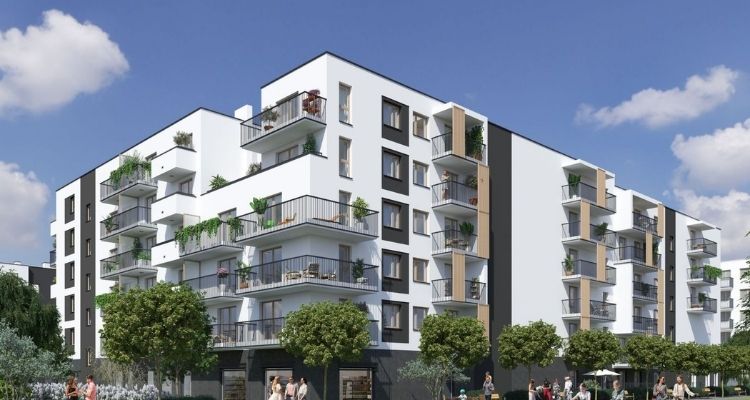10 Essential Steps to Choose the Perfect Neighborhood in Poland
Choosing the right neighborhood is one of the most crucial decisions you will make when relocating to Poland. With diverse regions ranging from bustling cities like Warsaw and Krakow to serene rural areas, the choice can be overwhelming. How do you navigate through various districts to find a community that suits your lifestyle, budget, and personal needs? In this guide, we’ll break down the essentials of how to choose a neighborhood for living in Poland, highlighting key factors, common pitfalls, and providing actionable tips to simplify your decision-making process. Let’s get started!

1. Define Your Priorities
Begin with a self-assessment. What do you value most in a neighborhood? Is it excellent schools for your children, proximity to work, vibrant nightlife, or access to nature? Knowing your priorities can help narrow down your options effectively.
2. Research Major Cities and Their Districts
Poland boasts many major cities, each with neighborhoods that cater to different lifestyles:
- Warsaw: Known for its modern vibe and bustling atmosphere, explore areas like Mokotów for families, or Praga for a more artistic scene.
- Krakow: Famed for its history, the Kazimierz district offers cultural richness while neighborhoods like Czyżyny provide quieter living.
- Gdańsk: If you prefer coastal life, Gdańsk’s Wrzeszcz is ideal, known for its parks and family-friendly environment.
3. Consider Cost of Living
Analyze the costs associated with each neighborhood. Areas in city centers generally have higher housing costs. Use online tools to compare the average rent prices and consider your budget. Websites like Numbeo can provide up-to-date cost comparisons across different cities in Poland.
4. Assess Safety and Crime Rates
Safety is a paramount concern. Review crime statistics for neighborhoods you are considering. Websites such as Policja.pl offer insights that can help you gauge the safety of a particular area. Additionally, engaging with locals through forums can provide firsthand accounts of living in the neighborhood.
5. Evaluate Accessibility
Good public transport is vital for commuting. Investigate the availability of bus, tram, or train options. Areas with easy access to public transport reduce transit time and make daily life easier, especially in larger cities where traffic can be an issue.
6. Explore Community and Culture
Each neighborhood has its unique charm and community vibe. Visit local cafes, parks, and community centers to get a feel for the area. Inquire about local events, clubs, or groups that resonate with your interests. A strong community connection can enhance your living experience.
7. Evaluate Schools and Educational Facilities
If you’re moving with family, the quality of local schools is critical. Research schools in the areas you’re considering. Websites such as EduInfo can help evaluate educational facilities based on performance and feedback from parents.
8. Check for Amenities and Services
Consider the availability of necessary amenities like supermarkets, hospitals, and recreational facilities. A well-serviced neighborhood enhances your quality of life significantly. Larger cities generally provide a range of choice, while smaller towns may have limited offerings but can be charming in their own right.
9. Engage with Locals
Use social media platforms like Facebook or local forums to reach out to residents of the neighborhoods you are considering. They can provide valuable insights and tips about living there, the community’s dynamic, and potential drawbacks you may not have considered.
10. Final Decision Considerations
After you’ve researched, listed pros and cons, and perhaps visited a few neighborhoods, weigh your findings thoughtfully. You might find it helpful to create a checklist of all factors that matter to you and rank them based on importance. Remember, your choice should align with both your lifestyle and your long-term plans.
Closing with a strong conclusion, it’s essential to remember that choosing the right neighborhood can significantly impact your life in Poland. By following these steps and considering various aspects, you’ll be better equipped to make an informed decision that meets your lifestyle needs. Good luck!
Frequently Asked Questions (FAQs)
Q1: How does the cost of living vary between cities in Poland?
A1: Major cities like Warsaw and Krakow tend to be more expensive due to urban demand, while rural areas or smaller towns often offer lower living costs.
Q2: What’s the best way to find housing in Poland?
A2: Websites like Otodom, Morizon, and local Facebook groups are great resources for finding available housing.
Q3: Are there many expat communities in Poland?
A3: Yes, cities like Warsaw and Krakow have vibrant expat communities, making it easier for newcomers to integrate and make connections.
Conclusion
Ultimately, selecting the perfect neighborhood in Poland is a combination of self-assessment, research, and community engagement. By applying the strategies outlined above and considering your unique circumstances, you can find a neighborhood in Poland that not only meets your needs but also feels like home. Start your journey today and transform your relocation experience into a rewarding adventure!








